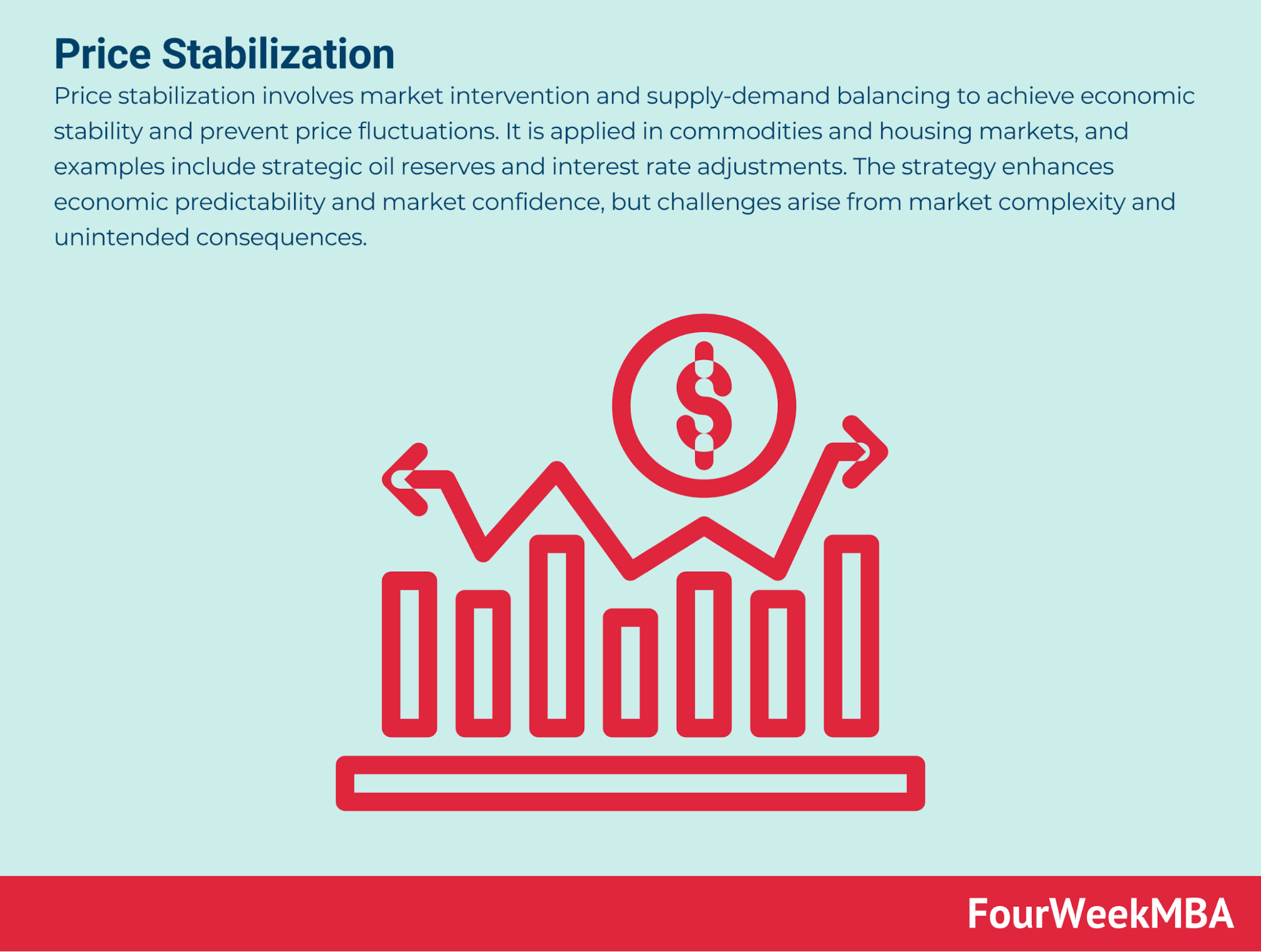The Hidden Domino Effect: How Global Trade Wars Could Make or Break Australian Homeowners
In February 2025, the Reserve Bank of Australia reported that a 40% increase in US tariffs on Chinese goods would trim Australia’s GDP by just 0.2 percentage points over 12 months—a seemingly negligible impact. Yet, beneath this modest figure lies a cascade of economic ripples that could profoundly reshape the housing market. Construction costs, already up 43% since 2020 due to supply chain disruptions, face further strain as tariffs inflate the price of imported materials, delaying projects and constricting housing supply.
This economic turbulence is compounded by shifting consumer behavior. Domain Research found that political uncertainty, exacerbated by global trade tensions, has reduced property transaction volumes, as Australians hesitate to commit to major purchases. “Uncertainty doesn’t just slow markets—it freezes them,” notes Sarah Hunter, Chief Economist at BIS Oxford Economics. Her analysis highlights how even minor policy shifts can amplify hesitation among buyers and investors.
Meanwhile, a weaker Australian dollar—down 3.5% against the US dollar since late 2024—offers mixed blessings. While it boosts export competitiveness, it also raises the cost of imported goods, further pressuring household budgets. These interconnected forces reveal a housing market delicately balanced on the edge of global economic volatility.

Image source: newsweek.com
The Role of Tariffs in Trade Conflicts
Tariffs, often perceived as straightforward economic tools, exert a far more intricate influence on global trade dynamics. Beyond their immediate impact on pricing, tariffs disrupt supply chain predictability, creating cascading effects that ripple through industries. In the context of construction, for instance, even a modest tariff increase can destabilize procurement schedules, as suppliers recalibrate sourcing strategies to mitigate cost surges. This unpredictability often results in project delays, compounding financial pressures on developers and inflating housing costs.
A comparative analysis of tariff strategies reveals distinct trade-offs. While protective tariffs shield domestic industries, they inadvertently incentivize inefficiencies by reducing competitive pressures. Conversely, economies that rely on open trade frameworks, such as Australia, face heightened vulnerability to external shocks, particularly when key trading partners like China are targeted by tariffs. This duality underscores the complexity of balancing short-term economic protection with long-term market resilience.
Contextual factors further complicate tariff efficacy. For example, Australia’s limited reliance on imported construction materials mitigates some direct cost impacts. However, indirect effects—such as reduced global demand for Australian exports—can erode economic stability, influencing housing affordability.
“Tariffs are not just a line-item on a balance sheet—they’re a timing gamble for the entire market.”
— Eleanor Creagh, Senior Economist, REA Group
Ultimately, understanding tariffs requires a nuanced approach that integrates economic theory with real-world supply chain dynamics, highlighting their role as both a policy tool and a market disruptor.
Australia’s Housing Market: A Primer
The interplay between global trade wars and Australia’s housing market reveals a nuanced dynamic often overshadowed by headline-grabbing tariff figures. One critical yet underexplored aspect is the indirect impact of supply chain disruptions on project timelines. While tariffs directly increase material costs, their more insidious effect lies in the uncertainty they inject into procurement cycles. This uncertainty forces developers to delay projects, creating a bottleneck in housing supply that exacerbates affordability challenges.
A comparative analysis of supply chain strategies highlights the trade-offs between just-in-time (JIT) procurement and inventory stockpiling. JIT systems, while cost-efficient, are particularly vulnerable to tariff-induced delays, as seen in the 2025 disruptions to steel imports. Conversely, stockpiling mitigates delays but inflates holding costs, a burden smaller developers often cannot bear. These competing approaches underscore the complexity of navigating a volatile trade environment.
Contextual factors further complicate the picture. For instance, Australia’s reliance on domestic materials shields it from some direct tariff impacts, yet the ripple effects of global demand shifts—particularly in mining and agriculture—can destabilize regional housing markets.
“Trade wars don’t just disrupt supply chains; they reshape market psychology,” notes Sarah Hunter, Chief Economist at BIS Oxford Economics.
This intricate web of logistical and economic interdependencies demands a recalibration of traditional housing market models, emphasizing resilience over short-term cost efficiency.
Economic Uncertainty and Its Impact on Housing
Economic uncertainty exerts a profound yet often underestimated influence on Australia’s housing market, reshaping both consumer behavior and investment strategies. For instance, a 10% decline in equity prices between February and March 2025 has directly reduced the purchasing power of many Australians, as nearly 30% of households rely on stock market investments to fund home purchases. This financial volatility discourages buyers, amplifying market stagnation.
Beyond immediate financial impacts, uncertainty disrupts long-term planning. Developers, facing unpredictable material costs and financing rates, often delay projects, exacerbating housing shortages. The Reserve Bank of Australia’s February 2025 report highlights that construction delays linked to economic instability have contributed to a 15% reduction in new housing starts compared to the previous year.
Counterintuitively, uncertainty can also attract foreign investors. A weaker Australian dollar, down 3.5% against the US dollar, has made property more affordable for international buyers, partially offsetting domestic demand declines. This duality underscores the intricate interplay between global and local forces, demanding nuanced policy responses.

Image source: realty.economictimes.indiatimes.com
Consumer Confidence and Investment Trends
Consumer confidence in housing markets is intricately tied to the interplay of economic signals and behavioral psychology, particularly during periods of global uncertainty. One overlooked dynamic is the role of perceived risk in moderating the impact of interest rate cuts. While lower rates theoretically enhance affordability, their effectiveness is often undermined by heightened economic anxiety, which suppresses both consumer spending and investment activity.
A detailed examination reveals that this hesitancy is not uniform across demographics. For instance, data from the ANZ-Roy Morgan Consumer Confidence report highlights that homeowners exhibit greater resilience in their investment decisions compared to renters, who remain disproportionately affected by cost-of-living pressures. This divergence underscores the importance of contextual factors, such as financial stability and asset ownership, in shaping market behavior.
Comparatively, international investors often respond differently. During the 2025 equity market downturn, foreign buyers capitalized on the weaker Australian dollar, viewing property as a stable asset class amidst global volatility. This influx partially offset domestic stagnation but also introduced new complexities, such as increased competition for limited housing stock.
“Economic uncertainty doesn’t just influence decisions—it redefines the parameters of risk and reward,” notes Eleanor Creagh, Senior Economist at REA Group.
Ultimately, understanding these nuanced trends requires integrating financial metrics with behavioral insights, offering a more comprehensive framework for navigating volatile housing markets.
Inflation, Interest Rates, and Housing Demand
The relationship between inflation, interest rates, and housing demand is shaped by a complex interplay of economic signals and behavioral responses. While lower interest rates are traditionally seen as a catalyst for increased housing demand, this dynamic becomes less predictable during periods of inflationary pressure. High inflation erodes real incomes, diminishing the purchasing power of households and altering their financial priorities.
One critical mechanism is the perceived real cost of borrowing. When inflation expectations rise, households may view nominal interest rates as less burdensome, theoretically encouraging borrowing. However, this effect is often counteracted by broader economic uncertainty. For example, during the inflationary spikes of the 2020s, many Australian households shifted their focus from long-term investments, such as home purchases, to short-term financial stability. This behavioral shift underscores the importance of consumer confidence as a mediating factor.
A comparative analysis of policy responses reveals additional complexities. While interest rate cuts can reduce mortgage costs, they are less effective when inflation outpaces wage growth. In such scenarios, households prioritize liquidity, delaying major financial commitments. Developers, too, face challenges, as inflation-driven cost volatility disrupts project timelines and budgets, further constraining housing supply.
“Interest rate cuts matter, but confidence is the real currency among Australian homeowners.”
— Eleanor Creagh, Senior Economist, REA Group
This nuanced dynamic highlights the need for integrated policy approaches that address both inflationary pressures and consumer sentiment. Without such balance, the anticipated benefits of rate adjustments may fail to materialize, leaving housing demand stagnant despite favorable borrowing conditions.
The Ripple Effects of Global Economic Shifts
Australia’s housing market operates within a web of global interdependencies, where even distant economic shifts can trigger profound local consequences. For instance, the 2025 slowdown in China’s manufacturing sector—driven by U.S. tariffs—has reduced demand for Australian iron ore by 12%, according to the Australian Bureau of Statistics. This contraction not only impacts export revenues but also curtails job growth in mining-dependent regions, indirectly dampening housing demand in these areas.
A less obvious but equally significant effect arises from shifts in global capital flows. As geopolitical tensions escalate, investors often seek refuge in stable markets. The Reserve Bank of Australia reports a 7% increase in foreign property investments during Q1 2025, spurred by a weaker Australian dollar. While this influx supports housing prices, it intensifies competition for limited stock, exacerbating affordability issues for local buyers.
These dynamics challenge the misconception that Australia’s housing market is insulated from global events. Instead, it underscores how external economic forces reshape domestic realities, demanding adaptive strategies from policymakers and stakeholders alike.

Image source: thenewdaily.com.au
Impact on Australia’s Major Trading Partners
The economic interplay between Australia and its major trading partners reveals a nuanced dynamic, particularly when trade wars disrupt established patterns. A critical observation is how reduced demand for Australian exports, such as the 12% decline in iron ore demand from China in 2025, triggers cascading effects across regional economies. This contraction not only impacts export revenues but also reshapes local housing markets, especially in resource-dependent states like Western Australia and Queensland.
One overlooked mechanism is the feedback loop between export performance and regional housing demand. When export revenues decline, mining communities experience reduced employment opportunities, leading to population outflows. This demographic shift depresses housing demand, particularly in areas reliant on resource-driven growth. For instance, the Australian Bureau of Statistics highlights that housing approvals in these regions have fallen below the national average, reflecting the direct impact of trade disruptions on local economies.
Comparatively, countries with diversified export portfolios, such as Canada, demonstrate greater resilience to similar shocks. Their ability to pivot to alternative markets mitigates the economic fallout, underscoring the importance of diversification in trade policy. However, Australia’s heavy reliance on China amplifies its vulnerability, as even minor slowdowns in Chinese manufacturing ripple through the economy.
“Trade disruptions are not just economic events; they redefine the socio-economic fabric of affected regions,” notes Sarah Hunter, Chief Economist at BIS Oxford Economics.
This analysis highlights the need for adaptive strategies, such as targeted infrastructure investment, to stabilize housing markets in resource-dependent regions. Without such measures, the long-term viability of these communities remains at risk.
Balancing Inflationary and Deflationary Forces
The interplay between inflationary and deflationary forces in Australia’s housing market reveals a complex dynamic shaped by global trade tensions. Tariffs, for instance, elevate costs for imported construction materials, driving inflationary pressures. However, deflationary trends can emerge when trade wars redirect global supply chains, introducing cheaper alternatives into the market. This duality creates a volatile environment where policy precision becomes paramount.
A detailed examination of monetary policy responses highlights the delicate balance required. For example, a 0.5% reduction in interest rates can save the average Australian homeowner approximately $2,600 annually on mortgage repayments. While this theoretically offsets rising costs, its effectiveness hinges on consumer confidence. Historical data from the Reserve Bank of Australia shows that during periods of heightened uncertainty, such as the 2020s trade disputes, rate cuts failed to stimulate demand as expected, with transaction volumes remaining stagnant.
Comparatively, countries like Canada have demonstrated resilience by leveraging diversified trade portfolios to mitigate inflationary shocks. In contrast, Australia’s reliance on specific trading partners amplifies its exposure to tariff-induced volatility. This underscores the importance of adaptive fiscal strategies that integrate both macroeconomic tools and targeted consumer incentives.
“Economic policy is as much about managing perceptions as it is about managing numbers,” notes Eleanor Creagh, Senior Economist at REA Group.
Ultimately, achieving equilibrium requires not only technical adjustments but also fostering trust in market stability, ensuring that both inflationary and deflationary forces are effectively counterbalanced.
Strategies for Homeowners and Policymakers
To navigate the ripple effects of global trade wars, homeowners and policymakers must adopt strategies that address both immediate challenges and long-term resilience. For homeowners, diversifying financial assets is critical. With 30% of Australian households relying on stock market investments to fund home purchases, equity market volatility—such as the 9% decline in Australian indices in early 2025—can erode purchasing power. Allocating savings into stable, inflation-resistant assets like real estate investment trusts (REITs) or government bonds can mitigate this risk.
Policymakers, meanwhile, should prioritize targeted fiscal interventions. For instance, increasing subsidies for domestic construction materials could offset tariff-induced cost surges, stabilizing housing supply chains. Additionally, incentivizing regional development through tax breaks can counteract population outflows in resource-dependent areas like Western Australia, where mining slowdowns have depressed housing demand.
These strategies underscore the importance of proactive adaptation. By addressing systemic vulnerabilities, stakeholders can transform economic uncertainty into an opportunity for sustainable growth.

Image source: fourweekmba.com
Interest Rate Adjustments as a Stabilizing Tool
Interest rate adjustments, while often viewed as a primary lever for stabilizing housing markets, operate within a web of interdependent factors that complicate their effectiveness. A critical yet underexplored dynamic is the lag between rate changes and their tangible impact on consumer behavior. This delay, influenced by factors such as refinancing inertia and economic sentiment, can dilute the intended effects of monetary policy.
One notable mechanism is the interplay between nominal and real interest rates. During inflationary periods, households may perceive nominal rate cuts as insufficient if real incomes are simultaneously eroded. This phenomenon was evident in Australia’s 2025 housing market, where a 0.5% rate reduction failed to significantly boost transaction volumes, as broader economic uncertainty overshadowed the potential savings.
Comparatively, countries like Canada have demonstrated greater responsiveness to rate adjustments due to their diversified economic structures, which buffer against external shocks. In contrast, Australia’s reliance on specific export markets amplifies the volatility of rate-driven interventions.
“Monetary policy is a blunt tool for housing markets, effective only when paired with measures that address underlying confidence,” notes Kenneth Kuttner, economist at Williams College.
Ultimately, interest rate adjustments must be integrated with targeted fiscal policies to address structural vulnerabilities, ensuring their stabilizing potential is fully realized.
Investment Diversification in Volatile Markets
Diversification in volatile markets requires more than spreading investments across asset classes; it demands a strategic alignment of assets that respond differently to economic shocks. One advanced technique is correlation-based diversification, which evaluates how assets move relative to one another during market turbulence. For instance, pairing Australian residential property with international equities can reduce portfolio risk, as these assets often exhibit low correlation during global trade disruptions.
A critical factor influencing this strategy is the volatility clustering effect, where market shocks tend to persist, amplifying risks in concentrated portfolios. By incorporating assets like government bonds or REITs, which historically stabilize returns during equity downturns, investors can mitigate these risks. A 2023 Vanguard study revealed that portfolios with at least 20% allocation to low-volatility assets outperformed purely equity-based portfolios by 4.2% during periods of heightened uncertainty.
“Diversification is the only free lunch in investing,” noted Harry Markowitz, Nobel laureate and pioneer of Modern Portfolio Theory.
However, implementation challenges arise, such as managing foreign exchange risks in international diversification. Addressing these nuances ensures that diversification strategies remain robust, even in unpredictable markets.
FAQ
How do global trade wars influence the Australian housing market through supply chain disruptions?
Global trade wars disrupt supply chains by imposing tariffs and creating bottlenecks in the availability of construction materials, which directly affects the Australian housing market. These disruptions lead to increased costs for imported goods, delays in project timelines, and reduced housing supply. Additionally, the ripple effects extend to labor shortages and heightened competition for limited resources, further inflating construction expenses. This cascading impact not only drives up property prices but also exacerbates affordability challenges for homeowners. By understanding these interconnected dynamics, stakeholders can better navigate the vulnerabilities exposed by global trade tensions in Australia’s housing sector.
What is the relationship between international tariffs and construction material costs in Australia?
International tariffs elevate construction material costs in Australia by increasing the price of imported goods, particularly those sourced from tariff-affected regions. This inflationary pressure disrupts procurement strategies, forcing developers to either absorb higher expenses or pass them on to consumers. Additionally, tariffs create supply chain unpredictability, leading to delays and scarcity of critical materials. While Australia’s reliance on domestic resources mitigates some direct impacts, the global interconnectedness of trade ensures that indirect effects, such as higher global demand for untariffed alternatives, still influence local markets. These dynamics collectively strain housing affordability and project feasibility for Australian homeowners and developers.
How does economic uncertainty from trade conflicts impact Australian homeowners’ purchasing power?
Economic uncertainty from trade conflicts erodes Australian homeowners’ purchasing power by destabilizing financial markets and reducing household wealth. Declines in equity prices, often triggered by global trade tensions, diminish the value of investments that many Australians rely on for home purchases. Simultaneously, inflationary pressures from higher import costs further strain household budgets, limiting disposable income. This uncertainty also affects borrowing conditions, as fluctuating interest rates and tighter credit policies make financing less accessible. Together, these factors create a challenging environment for prospective homeowners, amplifying hesitation and reducing overall demand in the Australian housing market.
What role does the Australian dollar’s fluctuation play in shaping housing affordability during trade wars?
The Australian dollar’s fluctuation significantly influences housing affordability during trade wars by altering the cost dynamics of imported goods and foreign investments. A weaker Australian dollar increases the price of imported construction materials, driving up building costs and, consequently, property prices. Conversely, it enhances the appeal of Australian real estate to foreign investors by lowering their purchasing costs, intensifying competition for limited housing stock. These currency shifts also impact household budgets, as higher import costs contribute to inflation, reducing disposable income. This interplay between exchange rates and economic forces underscores the complex relationship between currency movements and housing affordability.
How can Australian homeowners mitigate risks associated with global trade tensions and economic volatility?
Australian homeowners can mitigate risks from global trade tensions and economic volatility by diversifying their financial portfolios to reduce reliance on equity markets, which are vulnerable to trade-induced fluctuations. Allocating assets into stable options like government bonds or real estate investment trusts (REITs) can provide a buffer against market instability. Additionally, locking in fixed-rate mortgages shields against potential interest rate hikes driven by inflationary pressures. Monitoring currency trends and leveraging a weaker Australian dollar for refinancing or investment opportunities can also be advantageous. Proactive financial planning and seeking expert advice are essential strategies to navigate the uncertainties of global trade dynamics.








